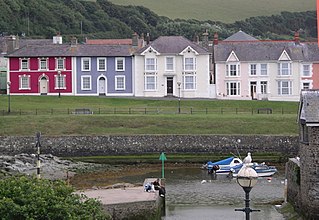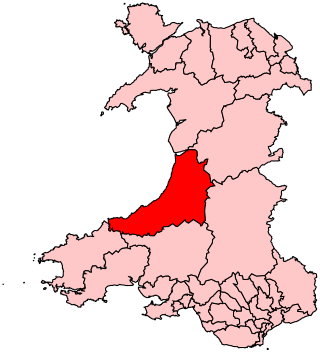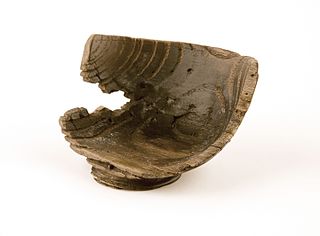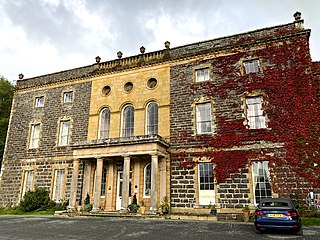Related Research Articles

Aberystwyth University is a public research university in Aberystwyth, Wales. Aberystwyth was a founding member institution of the former federal University of Wales. The university has over 8,000 students studying across three academic faculties and 17 departments.

David Davies was a Welsh industrialist and Liberal politician who sat in the House of Commons between 1874 and 1886. Davies was often known as David Davies Llandinam. He is best remembered today for founding Barry Docks.

Aberaeron, previously anglicised as Aberayron, is a town, community and electoral ward in Ceredigion, Wales. Located on the coast between Aberystwyth and Cardigan, its resident population was 1,274 in the 2021 census.

Ceredigion is a parliamentary constituency represented in the House of Commons of the UK Parliament. Created in 1536, the franchise expanded in the late 19th century and on the enfranchisement of women. Its boundaries remained virtually unchanged until 1983. From 1536 until 1885 the area had two seats : a county constituency (Cardiganshire) comprising the rural areas, the other the borough constituency known as the Cardigan District of Boroughs comprising a few separate towns; in 1885 the latter was abolished, its towns and electors incorporated into the former, reduced to one MP. The towns which comprised the Boroughs varied slightly over this long period, but primarily consisted of Cardigan, Aberystwyth, Lampeter and Adpar, the latter now a suburb of Newcastle Emlyn across the Teifi, in Carmarthenshire.
This article is about the particular significance of the year 1992 to Wales and its people.

The Nanteos Cup is a medieval wood mazer bowl, held for many years at Nanteos Mansion, near Aberystwyth in Wales.

Llanbadarn Fawr is a village and community in Ceredigion, Wales. It is on the outskirts of Aberystwyth next to Penparcau and Southgate. It forms the eastern part of the continually built-up area of Aberystwyth. It holds two electoral wards, Padarn and Sulien which elect a Ceredigion County Councillor each and several Llanbadarn Fawr Community Councillors. At the 2001 census its population as a community was recorded at 2,899, increasing to 3,380 at the 2011 census.
This article is about the particular significance of the year 1806 to Wales and its people.

Bow Street is a large village in the Tirymynach district of Ceredigion, Wales, approximately 3.5 miles (5.6 km) north-east of Aberystwyth. As well as Bow Street itself, it is now often considered to include the neighbouring smaller village of Pen-y-garn and the hamlet of Rhydypennau. All three places stretch in a long narrow strip along the main Aberystwyth to Machynlleth road, the A487.

Pen-y-garn is a small village in the Tirymynach district of Ceredigion, Wales, approximately 4 miles (6 km) north-east of Aberystwyth. Along with the hamlet of Rhydypennau, Pen-y-garn is now often considered to be part of the neighbouring larger village of Bow Street. All three places stretch in a long narrow strip along the main Aberystwyth to Machynlleth road (A487). As well as the houses on the main road from Cross Street up to Ysgol Rhydypennau, Pen-y-garn also includes the housing estates of Maes Ceiro, Bryn Meillion, Maes y Garn and Cae'r Odyn.
The office of High Sheriff of Cardiganshire was established in 1541, since when a high sheriff was appointed annually until 1974 when the office was transformed into that of High Sheriff of Dyfed as part of the creation of Dyfed from the amalgamation of Cardiganshire, Carmarthenshire and Pembrokeshire. Between the Edwardian Conquest of Wales in 1282 and the establishment of the High Sheriff of Cardiganshire, the sheriff's duties were mainly the responsibility of the coroner and the Custos Rotulorum of Cardiganshire. The office of High Sheriff remained first in precedence in the county until the reign of Edward VII when an Order in Council in 1908 gave the Lord Lieutenant of Cardiganshire the prime office under the Crown as the sovereign's personal representative.

Nanteos is an 18th-century former country house in Llanbadarn-y-Creuddyn, near Aberystwyth, Ceredigion, Wales. A Grade I listed building, it is now a country house hotel. The gardens and parkland surrounding the mansion are listed on the Cadw/ICOMOS Register of Parks and Gardens of Special Historic Interest in Wales.

Aberystwyth is a university and seaside town and a community in Ceredigion, Wales. It is the largest town in Ceredigion and 16 miles (26 km) from Aberaeron, the county's administrative centre. In 2011, the population of the town was 15,935.

Bow Street F.C. are based at Rhydypennau near Bow Street in Ceredigion, Wales, about 4+1⁄2 miles (7.2 km) north-east of Aberystwyth, and are currently playing in the Ardal Leagues North East. The team are nicknamed the Magpies, from the time when their strip was black and white stripes.
The bank officially known as the Aberystwith and Tregaron Bank was established at Aberystwyth, Cardiganshire in the beginning of the 19th century and was locally known as ‘Banc y Ddafad Ddu’, because the bank notes were imprinted with an engraving of a black sheep. The bank later established a branch at Tregaron.

John Humphreys Davies was a Welsh lawyer, bibliographer and educator. He joined the movement to start a National Library of Wales.
The first election to the Cardiganshre County Council was held in January 1889. It was followed by the 1892 election. The county was divided into numerous single member wards with two councillors elected to represent Cardigan, Lampeter, New Quay and Llandysul, and four to represent the town of Aberystwyth. 37 Liberals, 10 Conservatives and 1 Unionist were returned.

James Rhys Jones (1813–1889), usually known as Kilsby Jones, was a Welsh nonconformist minister, writer and lecturer.
William Thomas Rowland Powell was a Welsh landowner and Conservative politician who served as Member of Parliament for Cardiganshire from 1859 until 1865.

George Ernest John Powell (1842–1882) was a Welsh antiquary and collector known for his association with the Nanteos Cup, a medieval wood mazer bowl. He published poetry under the penname Miölnir Nanteos and translated two volumes of translations of Icelandic legends with the Icelandic scholar Eiríkur Magnússon.
References
- 1 2 3 4 5 6 7 8 9 Early Banks in West Wales, by Francis Green (in West Wales Historical Records, The Annual Magazine of The Historical Society of West Wales, Volume VI, edited by Francis Green, Printed by W. Spurrell & Son, 1916)
- ↑ Lloyd., T., Orbach., J., Scourfield, R., 2006, Pevsner Architectural Guides, The Buildings of Wales, Carmarthenshire and Ceredigion, Yale University Press ISBN 0-300-10179-1
- 1 2 https://biography.wales/article/s-WILL-EVA-1749 The National Library of Wales, Dictionary of Welsh Biography, Retrieved 5 September 2009
- ↑ (Wil o’ Whispers article in the Cambrian News based on records of the Midland bank)
- ↑ Lewis, W.J., Born on a Perilous Rock, p. 139
- ↑ Morgan, T.O., (1848), New Guide to Aberystwyth and its Environs, mentioned, p. 13
- ↑ Aberystwyth Observer, 9.1.1864
- ↑ Anon, (1874), Morgan's New Guide to Aberystwyth and Neighbourhood, p. 16
- ↑ Samuel, David, Cambrian News, 5.6.1903
- ↑ National Library of Wales, Nanteos Rentals
- ↑ DAVIES, A.S., A note from the Aberystwyth and Carmarthen Bank [sic], Archaeologia Cambrensis, 1935, Vol.90, p 152.
- ↑ "Aberystwyth History to 1850". Archived from the original on 2009-03-29. Retrieved 2009-09-05.